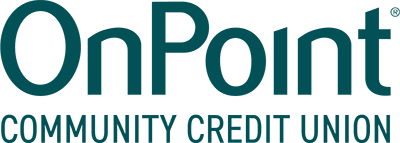The future holds many uncertainties, particularly when looking at upcoming financial needs. When faced with the tough decision of contributing to your retirement savings or helping to pay for your child (or grandchild’s) education, what should you do?
It’s no secret that the cost of college tuition is on the rise. The average in-state tuition for a four-year degree at a public institution increased 3 percent between the 2016-17 school year and the 2017-18 school year. Parents can’t do much to predict how college costs will change over the next couple of decades, but it’s a safe bet that the price of an education will continue to rise.
Further, with every generation, the breakdown of retirement income sources fluctuates. It’s expected that Baby Boomers’ retirements will be equally funded by personal savings and the government. It’s likely that the average Millennial’s retirement will be much less reliant on government resources with a greater portion needed for retirement from personal savings.
The separate goals of providing an education for the next generation and saving for retirement are both high-cost investments for many people. In this blog, we will help you better understand how to plan for these two major milestones:
Make saving a priority.
To be prepared for the expenses associated with college, as well as those with retirement, planning and saving is essential. However, for parents hoping to juggle both financial responsibilities, sometimes it seems as though people must choose between the two.
For many parents focused on providing for their children, sacrificing retirement savings in favor of providing a college education for their child feels like the right decision. However, this practice can lead to financial hardship down the road. College graduates who were once grateful for the assistance in paying for their degrees might one day realize that their parents may have been better off staying the course on their retirement savings goals.

Securing your own future first.
Parents with a 401(k), IRA or other retirement accounts may consider turning to these resources first to fund college costs. Withdrawing from these accounts early may come with several consequences, often in the form of fees and taxes.
There are some circumstances that avoid these excess costs, such as if your child begins college within the12 months following the withdrawal, and you can show that you don’t have another way to pay for the education. However, even when you’re able to bypass an early withdrawal fee, you may still get stuck with state or local income taxes.
These short-term consequences aren’t the only ramifications of withdrawing from retirement accounts to fund your child’s education. A lower amount of money in savings means you’ll earn less interest, which in time can have a significant impact on your retirement fund.
What’s more, a lack of retirement savings can come back to affect your children. If you reach retirement without the resources to care for yourself, that burden may be passed back onto your children. While a young, able-bodied adult may not want to think about themselves as elderly, frail or potentially disabled in the future, these are real possibilities that could have a great impact on their children’s financial stability.
The average family caregiver spends about $7,000 per year on a family member to whom they provide support, according to the AARP Family Caregiving and Out-of-Pocket Costs: 2016 report. Caregivers who live an hour or more away from the person they support and those who care for people living from dementia spend even more.
Further, caring for aging parents often translates to adult children reducing their working hours, adjusting their work schedules or taking more time off, thus impacting their earning potential.

Available resources for college vs. retirement.
College students and their parents have a plethora of options for financial assistance for college, including:
- Federal subsidized loans
- Federal unsubsidized loans
- Private loans
- Scholarships
- Home equity lines of credit
- Home equity loans
- Personal loans
Once students with education loans graduate from college, there are many options for repayment that can help make the process more affordable, including Public Service Loan Forgiveness for grads who go into nonprofit or governmental work, as well as income-based and Pay As You Earn plans.
Meanwhile, there are very limited options for aging adults to finance their retirements. A retiring property owner could opt to leverage equity in real estate to supplement retirement income. However, using property equity could put adult children in the tricky position of needing to either pay off the loan themselves or sell their family home—potentially a very emotional decision.
Financial advice can help parents balance savings goals.
Juggling multiple family savings goals like education and retirement isn’t an easy task. However, it’s possible to continue to fund a healthy retirement account while also setting aside some savings to help your child with future educational expenses. To do this, though, it’s important to start early.
Setting up a retirement account, whether you have access to an employer-sponsored 401(k) or decide to open your own IRA or other savings method, is a good start. Continually funding this account and allowing the money to grow and compound will give you a good onset toward a financially sound retirement.
Speaking with a Financial Advisor can help you determine your savings capabilities and what goals to work toward. For more information or advice on how to juggle long-term savings priorities, connect with a Financial Advisor today.






